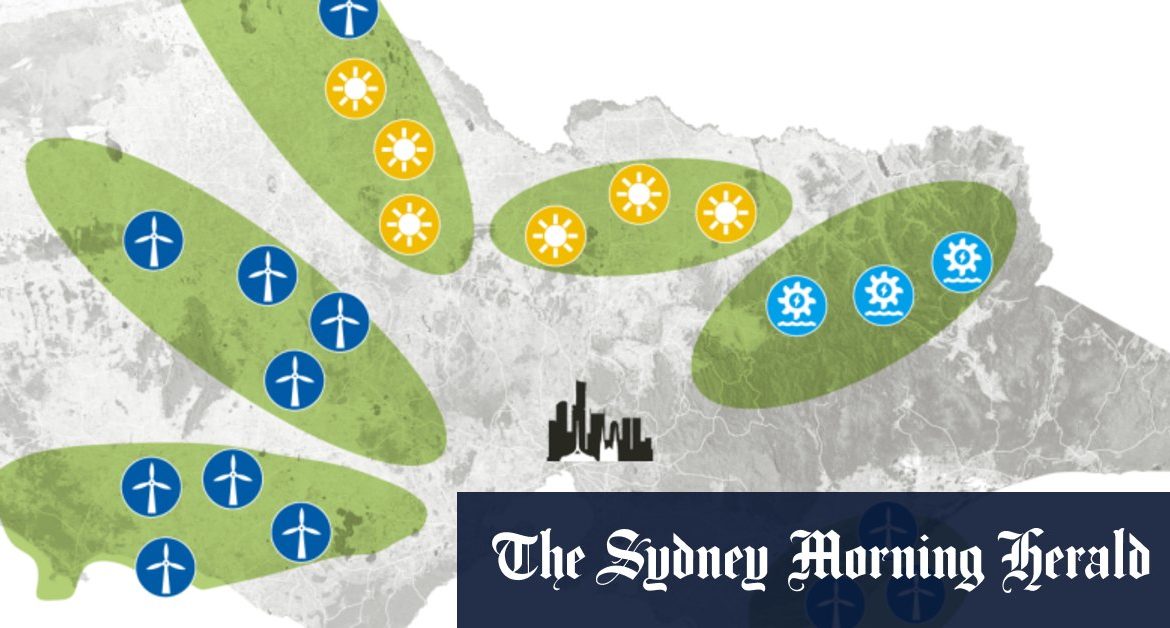But Victoria’s ageing grid is based on energy flowing from a small number of centralised power stations – mostly coal, but also some gas – to a large number of users.
The state’s hot and/or windy places aren’t very well connected, and it needs to be upgraded to cope with the soaring number of households with rooftop solar feeding into the grid.
Renewable energy zones mean that areas rich in renewables will be equipped with the right infrastructure and transmission capacity to send clean energy from large-scale wind and solar projects to the places that need it.
Victoria has long-term target of net zero greenhouse gas emissions by 2050. But it is well overdue in announcing its interim 2025 and 2030 emissions reduction targets, which are likely to be announced later this year.
A number of large-scale renewables will be developed in Victoria over the next three years. As part of its COVID-19 economic recovery package, the Victorian government launched a process to test market interest in building 600 megawatts of renewable energy capacity.
Loading
This is about building the “roads” – in the electrical sense of the word – necessary to harness renewables, said energy analyst Bruce Mountain, director of the Victoria Energy Policy Centre.
And it will almost certainly mean power prices will come down. “It’s much cheaper to make electricity from wind and solar than it is to produce from clapped-out brown coal generators,” Mr Mountain said.
Victoria’s new renewable energy zones will be based on a plan developed by the Australian Energy Market Operator that has identified solar and some wind projects in the north and central west of the state, hydro in the alps and wind generation in Gippsland and central Victoria.
Most of the $540 million dollars won’t be spent on huge new lengths of transmission lines, but on “quite boring, quite invisible, but extremely important” upgrades, said Environment Victoria’s campaigns manager Nick Aberle.
This will include overhauling existing transmission lines so that they can run at higher voltage and adding features like synchronous condensers, which improve power grid stability.
There were stability issues in Victoria’s north-west last summer, with five operational solar farms ordered to halve the amount of energy they were feeding into the network amid concern about national stability. Upgrades should make that a thing of the past.
Victoria’s 2020/21 budget provided the funding grunt to really get the state’s energy transition going. As well as $540 million for the renewable energy zones, there was a massive $800 million for energy efficiency upgrades, including solar and battery rebate schemes.
Earlier this month, Environment Minister Lily D’Ambrosio announced one of the world’s largest lithium-ion batteries would be built in Victoria by French renewable energy giant Neoen to bolster the reliability of the grid.
It’s a comprehensive package, said Clean Energy Council spokesman Kane Thornton. “It’s not just throwing money at the shiny things. It’s going deep and broad in all parts of the sector.”
Similar moves are underway in others states. NSW has signed off on establishing three renewable energy zones in the Central West and New England regions by 2030, with $32 billion in private investment. South Australia plans to reach net 100 per cent renewables within a decade and Tasmania has unveiled a draft plan to reach its target of “200 per cent” renewables by 2040.
“State governments are, quite sensibly, going to do this in a whole-of-government way,” said Victoria Energy Policy Centre’s Mr Mountain. “They’re taking the power back.”
Start your day informed
Our Morning Edition newsletter is a curated guide to the most important and interesting stories, analysis and insights. Sign up here.
Miki Perkins is a senior journalist and Environment Reporter at The Age.
Most Viewed in National
Loading







